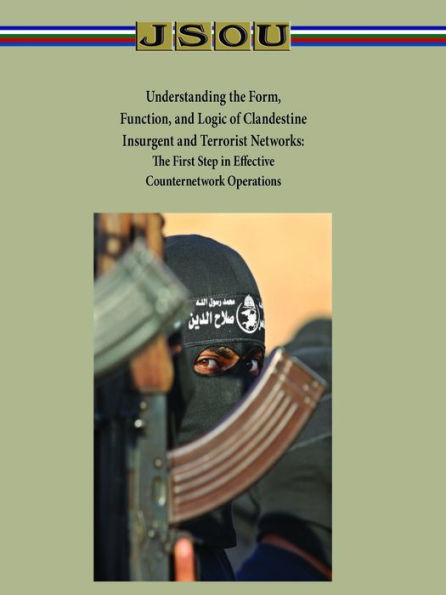Since the events of 11 September 2001, the United States military counternetwork operations, theory, and doctrine have failed to account for the form, function, and logic of clandestine cellular networks used by both interstate insurgencies, such as those in Iraq and Afghanistan, as well as by global insurgencies like al-Qaeda and its associated movements. The failure to understand the form, function, and logic of clandestine cellular networks has led to the incorrect application of counternetwork operations based on ill-informed counternetwork theories. This monograph defines counternetwork operations as a subset of counterinsurgency and counterterrorism operations. Like counterguerrilla operations, counternetwork operations are focused on a specific element of the insurgency. In this case, counternetwork operations are conducted against the clandestine cellular networks within an insurgency, specifically the underground and auxiliary, not the overt guerrilla elements. This is a counter organizational operational construct, not a strategy in-of-itself, as has happened with counterterrorism—a counter “tactic”—turned strategy. Although counternetwork operations are not specifically discussed in U.S. joint or service doctrine, since 9/11, these operations have been the primary offensive effort of both Special Operations and conventional forces, normally referred to as raids, direct-action, or intelligence-driven operations to capture or kill high-value individuals in the insurgencies in Iraq or Afghanistan, and globally against al-Qaeda and its associated movements. During this time, counternetwork operations have primarily focused on targeting key leaders, facilitators, individuals with special skills, or highly-connected individuals, all of which intuitively seem to be the correct targets for disconnecting clandestine cellular networks. However, there has been little comparative analysis done to verify if these operations are in fact having the overall effect required to disrupt, neutralize, defeat, or ultimately destroy these networks.
Understanding the form, function, and logic of clandestine cellular networks reveals that the removal of single individuals, regardless of function, is well within the tolerance of this type of organizational structure and thus has little long-term effect. Counternetwork operations focused on critical individuals, known as high-value individuals or targets (HVI or HVT), have not proven overly successful for this reason. They gain media attention, provide a momentary lift in the spirits of the counterinsurgent or counterterrorist effort, but rarely produce strategic effects as anticipated. A contemporary example of this was the death of Abu Musab Zarqawi (AMZ), the infamous al-Qaeda leader in Iraq, who was killed in 2006. At the time, there was speculation that the death of Zarqawi would end the insurgency or at least seriously degrade the Sunni insurgency in Iraq. However, it had little overall effect. His organization was resilient enough that his deputy, Abu Ayyub al Masri (AAM), assumed his leadership role and continued to lead al-Qaeda in Iraq until AAM was himself finally killed in 2010. With AAM’s death, his replacement was quickly announced, and al-Qaeda in Iraq continued to conduct attacks in Iraq at the time of publication of this onograph.



